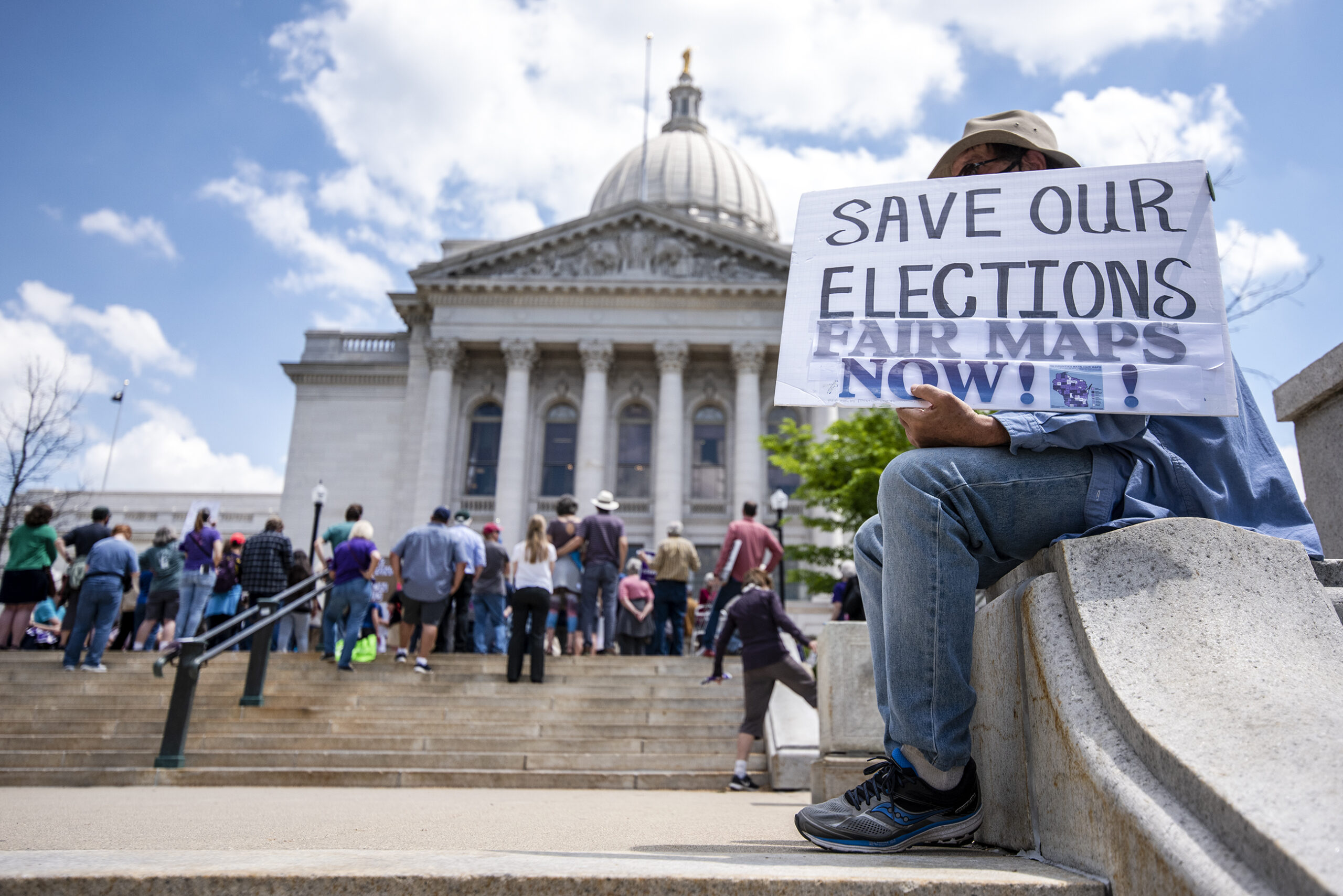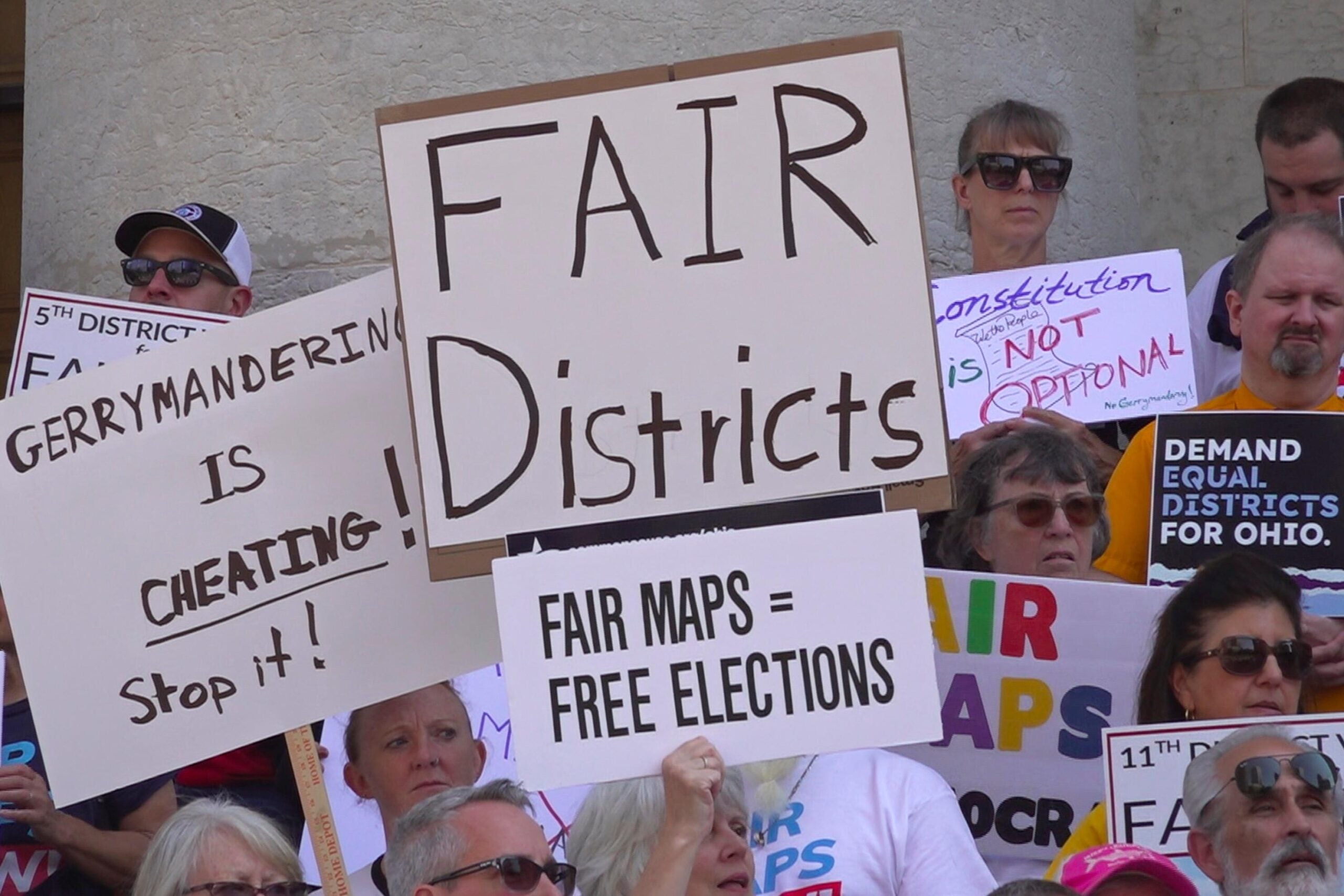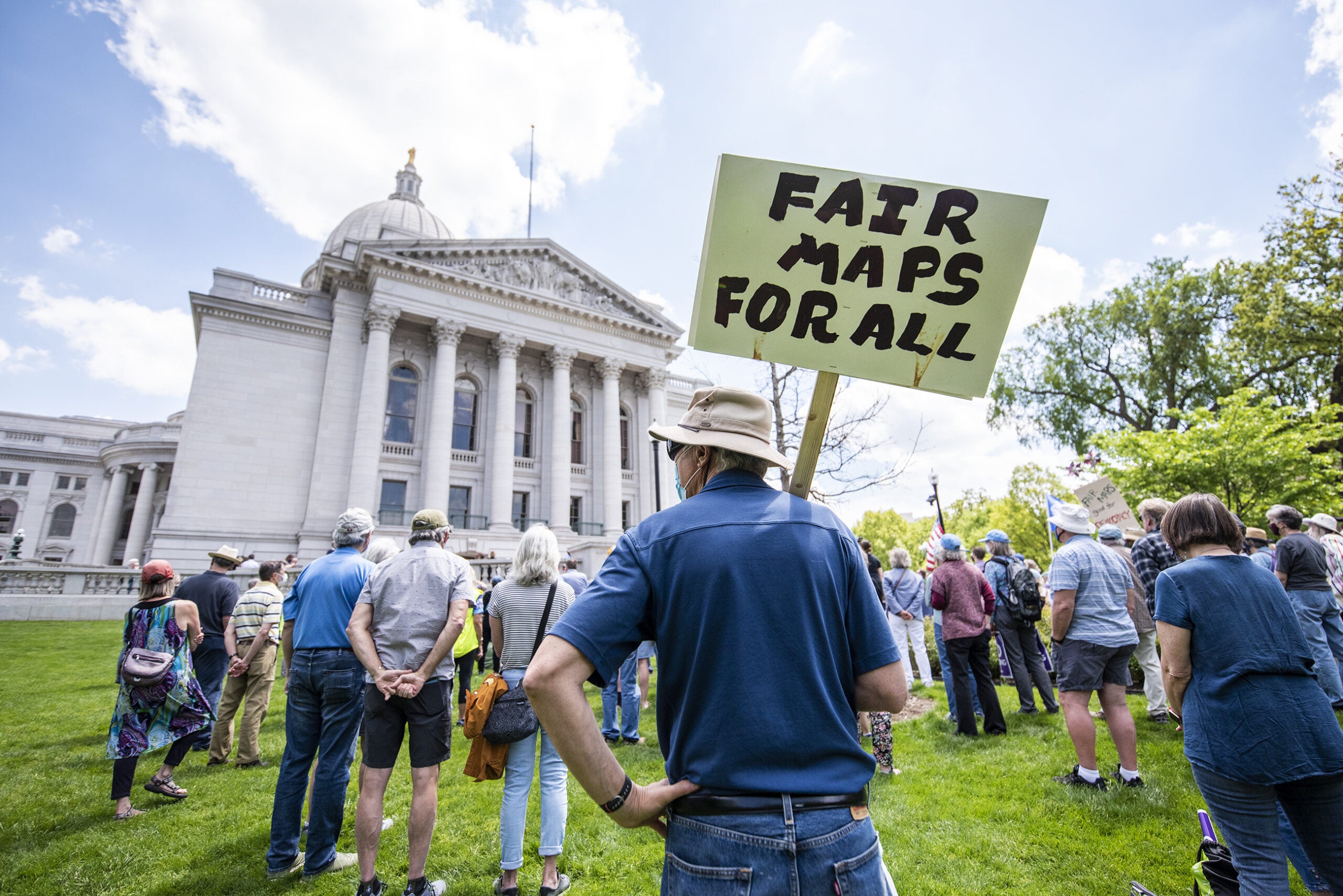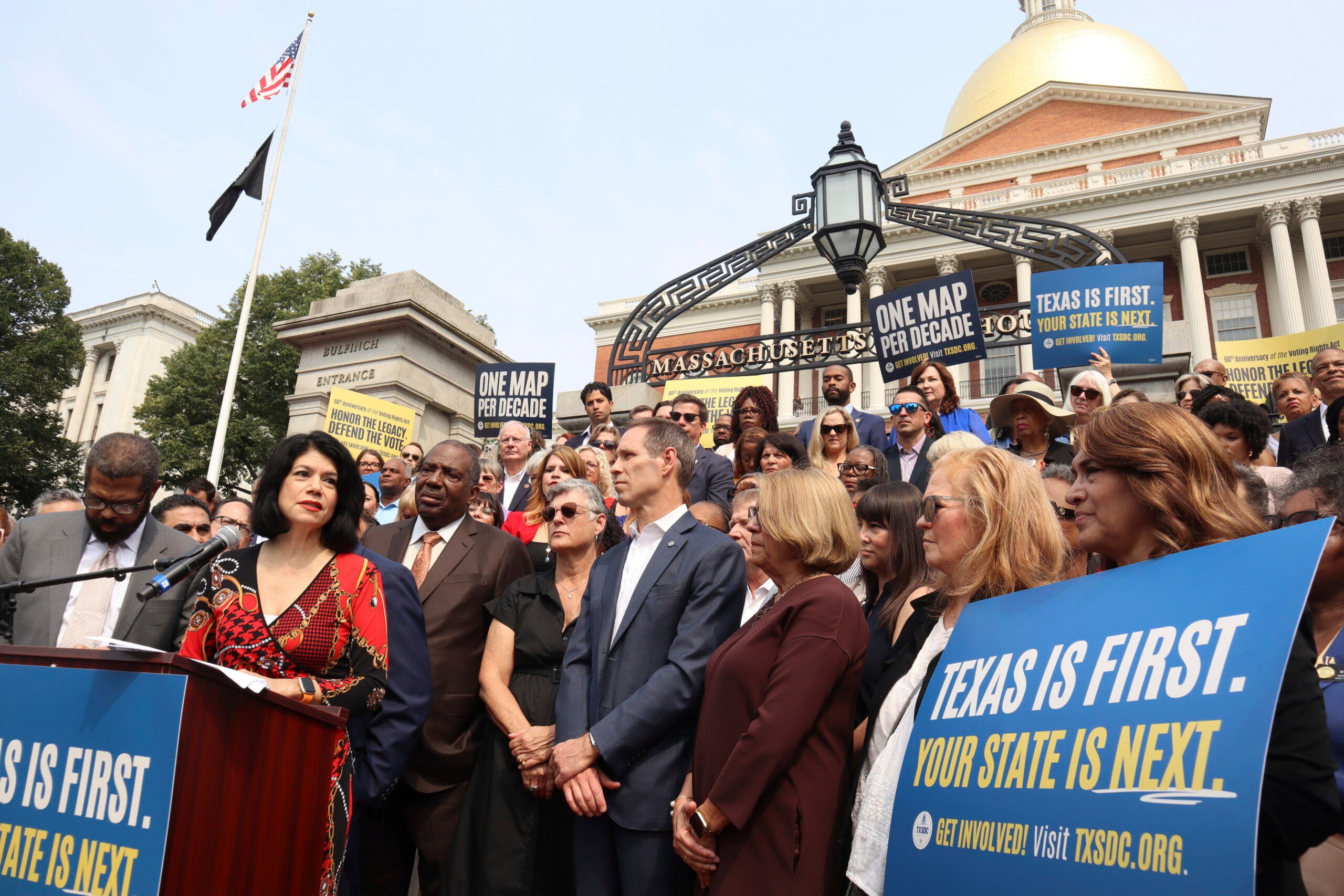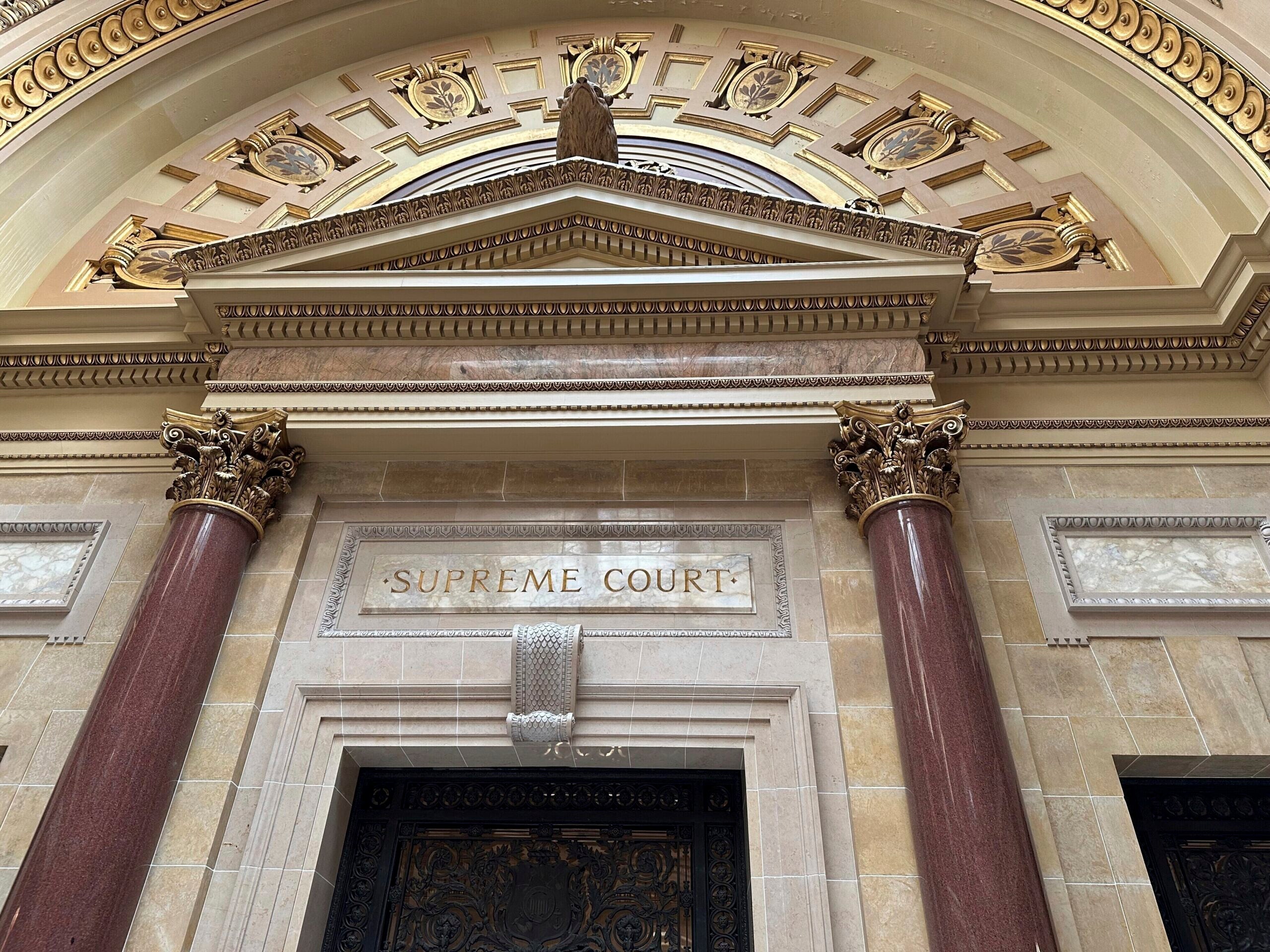In Wisconsin, it’s the job of the Legislature and the governor to handle redistricting, and pretty much no one thinks they’re actually going to do it.
Sure, the Republican-controlled Legislature and Democratic Gov. Tony Evers both have their own plans, but it’s extremely unlikely that they’ll agree. Wisconsin will get new maps, but just how they come to be may not be straightforward.
Courts will almost certainly be involved, but which court and when are still open questions.
Theoretically there are a few different ways redistricting can work, and some are more likely than others in Wisconsin.
Nonpartisan redistricting
One of the ideas for redistricting that’s most popular with the public is also one of the least likely to happen in Wisconsin, at least under the current political divide.
People who don’t like keeping the Legislature and the governor in charge of redistricting often call for a nonpartisan system, where politicians have less control over their own districts.
There have been bills introduced in Wisconsin every session for a decade that would do just that, but they haven’t gone anywhere. When the latest version was introduced in May, supporters held a rally outside the Capitol.
“This bill is not about any party. It’s about establishing a process that gets politicians out of the mapmaking business altogether,” Whitefish Bay Democratic Rep. Deb Andraca told the crowd.

State Rep. Deb Andraca, D-Whitefish Bay, speaks at the Rally for Fair Maps on Monday, May 17, 2021, in Madison, Wis, while attendees hold signs on the Capitol steps. Angela Major/WPR
Under the plan, the nonpartisan Legislative Reference Bureau would be responsible for drawing Wisconsin’s political maps.
The Legislature would still get to vote on the plan, but the process would be different than it is for most bills. Lawmakers would initially get an up or down vote on the plan with no opportunity to amend it in the Assembly or the Senate. If the bill failed, the Legislature would have to explain why, and the Legislative Reference Bureau would draw a new plan to accommodate that feedback. The same process would then start over.
If the second bill failed, map drawers would make more adjustments before sending the Legislature a third bill. Lawmakers could amend that version but only with a three-fourths vote in both houses of the Legislature, meaning that practically speaking, it would require broad bipartisan support.
Although the nonpartisan redistricting bill has two Republican cosponsors, the vast majority of lawmakers backing the plan are Democrats. That’s typically been where it’s gone in Wisconsin, where, for the last decade, Republicans have benefited from the way the maps are drawn now.
Given the political realities of Wisconsin, redistricting reform may seem like a Democratic issue, but just across the border in Illinois, it’s Republicans who are asking to change the way maps are drawn.
Democrats hold all the power there, controlling both houses of the Legislature and the governor’s office. In many ways, it’s the opposite of what happened in Wisconsin in 2011.
So with Democrats in charge of redistricting, Illinois Republicans sound a lot like Wisconsin Democrats.
“Politicians should not draw their own maps,” said Jason Barickman, a Republican state senator from Bloomington, Illinois at a press conference in March 2021. “Politicians shouldn’t pick their own voters. And the people know that if any one party rejects an independent mapmaking process, they do so solely to fulfill a political and partisan purpose.”

Illinois state Sen. Jason Barickman, R-Bloomington, minority spokesman on the Senate Redistricting Committee, explains legislation he has introduced to create a nonpartisan, independent commission to draw new legislative and congressional districts following the 2020 Census, Thursday, April 28, 2021, in Springfield, Ill. John O’Connor/AP Photo
Illinois Republicans are not alone. For example, Maryland Gov. Larry Hogan, a Republican in a state with a Democratic legislature, has called for a new system of redistricting.
Neither Barickman nor Hogan are household names in Wisconsin, where the state GOP has stood staunchly against changing the system. But another Republican — once the party’s standard-bearer — was among its biggest advocates more than 30 years ago.
“The fact is, gerrymandering has become a national scandal,” said former Republican President Ronald Reagan during a speech to the Republican Governors Association in 1987. “The democratic controlled state legislatures have so rigged the electoral process that the will of the people cannot be heard.”
Reagan was frustrated that despite his strong popularity, he’d never had a Congress that was fully controlled by Republicans. He blamed redistricting.
Reagan talked about this repeatedly and suggested a bipartisan commission could fix it.
“I think maybe our founding fathers made something of a mistake in the method of reapportionment,” Reagan said.
The comments from Reagan decades ago and from Republicans in Illinois and Maryland today demonstrate that redistricting reform is not strictly a Democratic or Republican issue, it depends on political circumstances.
And the circumstances in Wisconsin are this: Democratic lawmakers want redistricting reform, but they’re basically powerless to make it happen. They’d need Republicans to change the system, and Republicans in Wisconsin say they won’t do it.
Other states, like Michigan, have done this recently, but residents there have options for changing the system that Wisconsinites do not.
“We are probably more locked in here than in most other places because we lack direct democracy options,” said University of Wisconsin-Madison law professor Rob Yablon “Because amending the constitution in Wisconsin is not that easy.”
In Michigan, voters passed a citizen initiative to amend their state constitution. Now, their maps are drawn by an independent commission instead of the Legislature.
Amending the Wisconsin Constitution can’t be done by citizen initiative. Instead, it requires two consecutive sessions of the state Legislature to pass an identical resolution which then must be approved by a majority of voters statewide.
“We’re stuck with the political actors having to give away some of their power,” Yablon said. “And that is something that they are loath to do.”
Evers’ ‘People’s Maps Commission’
That said, Gov. Tony Evers wanted to try something like this with his “People’s Maps Commission.”
The commission is a little different than the system advocates at that rally were proposing. Instead of relying on nonpartisan government attorneys, Evers picked a panel of retired judges, to pick a panel of nine citizens, to take input from the public and draw maps.
This commission looked at traditional redistricting criteria when it drew the maps: contiguity, compactness, preservation of political boundaries, communities of interest and population deviation.
The commission also added another principle, something they called “partisan fairness.” The idea was that they wanted a legislative map that resembled Wisconsin’s statewide elections, which would be closer to 50-50 Republican and Democrat.

Wisconsin Democratic Gov. Tony Evers signs an executive order creating a redistricting commission on Monday, Jan. 27, 2020, in Madison. Scott Bauer/AP Photo
The commission worked with Moon Duchin, a redistricting expert and math professor from Tufts University in Massachusetts.
“We’re going to call that pretty fair,” Duchin said. “And we’re going to be able to defend that to everyday Wisconsinites.”
That was the goal, anyway. But the first two sets of maps the commission released were not 50-50. Rather, they would have given Republicans at least a 53-percent majority.
“This is due to the well known fact that if you draw districts in against the real political geography of most any American state, districts tend to confer a geographic advantage to Republicans who at this time in U.S. history are more spread out across rural areas, while Democrats are a bit more concentrated,” Duchin told commission members.
This idea of “political geography” is not unique to Wisconsin, but it is pronounced here. Wisconsin’s cities are full of Democratic voters, and they’re even more Democratic than they were even a couple of decades ago. That leaves fewer Democrats in small towns and rural areas than there used to be, meaning even a neutral redistricting plan can still favor one party.
The whole idea of this commission was to produce a final map and ask the Legislature to vote on it. But Republicans in the Legislature, like Assembly Speaker Robin Vos, have said Evers can only sign or veto a map, not draw one.
“You can form whatever kind of fake, phony, partisan process he wants to create,” Vos said. “But I have no doubt, in the end, we will do it the way we always have, which is to follow the Constitution.”
The Legislature
The Wisconsin Constitution does indeed give the Legislature the power to redistrict, stating that after the U.S. Census, “the Legislature shall apportion and district anew the members of the Senate and Assembly, according to the number of inhabitants.”
Just like in 2011, Republicans have hired private attorneys to help with redistricting. They also took a page from the governor’s People’s Maps Commission, with Vos setting up his own public redistricting portal where people could submit maps online. A few of the submissions came from Joe Handrick, one of the Republicans who helped draw new maps in 2011.
The Legislature unveiled its 2021 maps on Oct. 20, and just like a decade ago, they were far more Republican than the state as a whole. A review by the Campaign Legal Center found they’d make it virtually impossible for Democrats to win a majority.
Once Republicans pass their map, it will go to the governor’s desk, where Evers has given every indication he plans to veto it.
“It’s unconscionable and insulting to the people of this state, frankly, that Republicans think they can pass another set of gerrymandered maps,” Evers said.
If the process plays out this way — where the Legislature sends Evers a map and he vetoes it — there’s nothing preventing them from trying again with a different map.
But given the divide between the Legislature and Evers, the dispute is likely to be decided in court.
Federal court
Exactly which court will decide the maps remains to be seen, but Democrats have made it clear that they’d like to fight it out in federal court.
They filed a lawsuit there just one day after the new U.S. Census data was released. Ten days later, several citizen groups that align with Democrats filed their own lawsuit in that same court.
“I think that for the Democrats, or really anyone who wants to undo the gerrymander that we have in Wisconsin, they probably thought that they would have a better shot in federal court, given the track record of the federal courts with Wisconsin redistricting in the past,” said Yablon, the UW-Madison law professor, who opposes the maps proposed by Wisconsin Republicans.

Wisconsin is “stuck with the political actors having to give away some of their power,” in order to reform redistricting, said Rob Yablon, a UW-Madison law professor. Angela Major/AP Photo
Federal courts had a hand in drawing Wisconsin’s maps in the 2000s, the 1990s, and the 1980s. Redistricting cases in federal court always go before a panel of three judges.
The judges hearing this year’s case include U.S. Appeals Court Judge Amy St. Eve of Illinois, U.S. District Judge Edmond Chang of Illinois and U.S. District Judge James Peterson of Wisconsin. St. Eve was nominated to the court by former Republican President Donald Trump while both Chang and Peterson were nominated by former Democratic President Barack Obama.
Even though they wouldn’t have known it at the time they filed the case, Yablon said Democrats “probably were fairly happy with that panel.”
This panel has indicated it’s prepared to take over redistricting if the governor and the Legislature don’t agree, but first, it’s going to give the Wisconsin Supreme Court a chance to resolve redistricting.
The Wisconsin Supreme Court
The state Supreme Court is where a conservative group — the Wisconsin Institute for Law and Liberty — has chosen to file a lawsuit that asks the court to make as few changes as possible to Wisconsin’s current map if the Legislature and governor can’t agree on a new one.
While redistricting is definitely within the Wisconsin Supreme Court’s purview, the last time justices drew a map for Wisconsin was 1964.

The Wisconsin Supreme Court on Wednesday, June 9, 2021, at the Wisconsin State Capitol in Madison, Wis. Angela Major/WPR
Earlier this year, there was a hearing for a plan that would force the Wisconsin Supreme Court to handle redistricting. About four minutes after it started, then-Chief Justice Patience Roggensack said she didn’t see how the court could handle map-drawing.
“Drawing maps would take a huge staff, we don’t have them,” Roggensack said. “I don’t know how in the world you think the court could ever draw the maps.”
Those hesitations aside, Yablon said the state Supreme Court could still end up resolving redistricting, if justices do it another way.
“It’s possible that the state Supreme Court will be more inclined to just choose one of the maps submitted to it, which requires a little bit less technical expertise on its part,” he said.
That would put the focus squarely on the seven people who sit on the court, who have all been elected in statewide races that are officially nonpartisan. But in practice, these races get very partisan — so much so that the Democratic and Republican parties both actively campaign for the candidates they want.
The state Supreme Court has had a conservative majority since 2008, and has sided with Republicans on many of the foundational laws passed during former Gov. Scott Walker’s administration. From Act 10, to voter ID, to the lame duck laws, the court has often had the final say on major policies that have shifted Wisconsin to the right.
The court currently has a 4-3 conservative majority, but for the past couple of years, that majority hasn’t been a given on some very big issues.
That’s really because of one justice: Brian Hagedorn.
Hagedorn was elected in 2019, and like many statewide elections in Wisconsin, it was close. He won by fewer than 6,000 votes statewide.

Justice Brian Hagedorn speaks to delegates at Wisconsin Republicans’ annual state convention in Oshkosh Saturday, May 18, 2019. Shawn Johnson/WPR
A lot of people didn’t think Hagedorn was going to win that year, and when he did, he made a point to thank the people who got him there, addressing GOP activists at the 2019 Republican State Convention.
“When I got punched, you were the ones who punched back,” he said. “When I got knocked down, you grabbed the baton and you kept running with it. You did … you did this.”
Hagedorn had a long history with Republicans before he became a judge, and later a justice. About a decade ago, the last time Wisconsin’s district maps were drawn, he was chief legal counsel for Gov. Scott Walker. In other words, he was Walker’s lawyer when Walker signed the map.
Hagedorn told Republicans something else that day at the convention, which in hindsight, seems telling. He said he wouldn’t play politics on the court, he’d defend the rule of law.
“It might mean by the way that sometimes I issue rulings or the next 10 years that some of you won’t like,” Hagedorn said. “But I just want you to know that when that happens, it’s because I’m being faithful to the oath that I’m going to take and I’m doing exactly what I said I was going to do.”
Hagedorn has indeed ruled against Republicans, including in a handful of cases that received national attention.
One involved a lawsuit filed by Republican lawmakers challenging the Evers administration’s COVID-19 stay-at-home order. While the court ultimately ruled in favor of Republicans in this case, Hagedorn would have upheld the administration’s order.
He also ruled against President Donald Trump and his allies three times in lawsuits seeking to overturn Wisconsin’s 2020 election results.
Yablon said Hagedorn is the justice everyone is watching if the Wisconsin Supreme Court decides to handle redistricting this time, and he thinks there’s a “fair chance” he might not side with Republicans.
“I think that he might think that courts are meant to be neutral arbiters,” Yablon said “And it’s hard to really cast yourself as a neutral arbiter if you’re choosing a redistricting plan that is very clearly one that has a partisan tilt to it.”
‘A heavy lift’
There are other scenarios that could happen with redistricting, and although they may seem more far-fetched than the other options right now, both are possible.
One would be a massive shakeup to the way redistricting has historically happened in Wisconsin: Republicans could try to bypass the governor altogether and pass redistricting as a joint resolution, which doesn’t require his signature.
The Legislature tried this in 1963. But a unanimous Wisconsin Supreme Court struck them down, ruling that redistricting is something the Legislature and governor have to do together.
Yablon said that in theory, the current Legislature could try this again, and the current Supreme Court could overturn this 57-year precedent, but he’s dubious.
“I think that that is a heavy lift for them,” Yablon said. “With the 4-3 conservative majority on the court, it is conceivable, but I would be surprised if they were successful.”
Republican leaders were asked about this in 2019, and said they’d never even discussed it, but they also didn’t say they wouldn’t try it.
A redo in 2023?
Another theoretical scenario that could happen depends on who wins the 2022 elections.
Say the redistricting process moves ahead as expected — a court draws the maps, and it seems like everything is done.
And say that in the 2022 elections, Republicans keep their majorities in the Legislature, and they defeat Evers.
When they took office in 2023, they’d have single party control of state government, just like during the Walker years. Could they pass another new map?
“I do think that they could redo a court drawn map if they chose to,” Yablon said.
Asked about that prospect by WPR, attorneys for the nonpartisan Legislative Reference Bureau said that a future legislature and governor could indeed redraw the maps this decade. According to the reference bureau, they could redraw the lines as many times as they want to.
To be clear, this is only theoretical at this point. The other avenues for redistricting — a legislative map, a state or federal court-drawn map — could decide Wisconsin’s maps for the next decade.
Because it could let them harness the power of redistricting, and control the political pendulum for years to come.
This story is part of “WPR Reports: Mapped Out,” a podcast about redistricting in Wisconsin. Never miss an episode by subscribing now on your favorite podcast app or at wpr.org/mappedout.
Wisconsin Public Radio, © Copyright 2025, Board of Regents of the University of Wisconsin System and Wisconsin Educational Communications Board.

